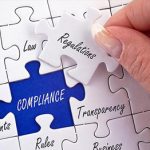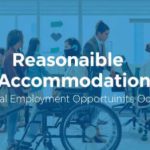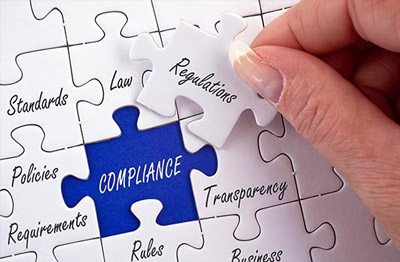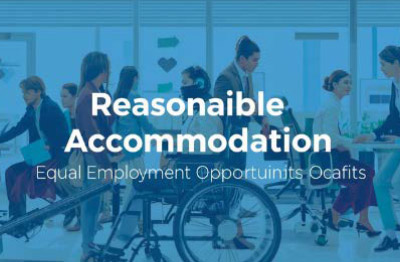The Role of Human Resources Consulting Firms in Conducting Adverse Impact Analysis
Posted on May 5, 2025

Calculating adverse impact analysis is critical in creating fair and legally compliant hiring practices, yet many organizations struggle to do it effectively. Due to the complexity of calculations, limited internal expertise, or concerns over objectivity, businesses often face challenges in accurately identifying and mitigating adverse impact— This is where human resources consulting companies step in, providing the expertise, tools, and guidance necessary to ensure equitable and defensible practices.
This blog explores the importance of adverse impact analysis, the benefits of outsourcing this process, and real-world case studies showcasing its application. Understanding this role is essential if you’re an HR professional or business leader aiming to reduce risk and ensure compliance.
What is Adverse Impact Analysis?
Adverse impact occurs when a seemingly neutral employment policy or practice disproportionately affects a protected group, such as gender, race, or age, without a legitimate business justification. While this can be unintentional, it exposes companies to significant liabilities impacting compliance and reputation. Adverse impact analysis identifies and evaluates such policies or practices to mitigate risk and promote fairness in the workplace. It involves reviewing data and statistics to determine if there are any disparities in hiring, promotion, or other employment decisions based on protected characteristics.
The Importance of Adverse Impact Analysis
Conducting an adverse impact analysis is crucial for organizations as it helps them identify areas where discrimination may be occurring. By analyzing employment data, companies can proactively address any potential issues and take corrective actions to ensure equal opportunities for all employees. This promotes fairness and diversity and helps organizations avoid costly lawsuits and damage to their reputation.
Calculating Adverse Impact
To conduct an adverse impact analysis, begin by collecting demographic data on job applicants and employees, focusing on key employment decisions such as hiring, promotions, or terminations. Next, group individuals into relevant categories based on protected characteristics like race, gender, or age.
Apply the Four-Fifths Rule by calculating selection rates for each group and comparing them—if the selection rate for any group is less than 80% of the rate for the most selected group, adverse impact may be present. You can also use statistical tests such as the chi-square or Fisher’s exact test to validate findings. It’s important to document each step and interpret results in context, considering the overall hiring process and job-related requirements.
Why Adverse Impact Analysis is Important
An adverse impact analysis ensures your organization is:
- Legally Compliant: It helps identify and address practices that may violate equal employment laws, such as Title VII of the Civil Rights Act of 1964.
- Ethically Responsible: Promoting fair opportunities fosters workforce diversity, inclusion, and trust.
- Prepared Against Penalties: Adverse impact rulings can result in legal penalties, costly settlements, and reputational damage.
The Complexity Behind Adverse Impact
Adverse impact analysis involves statistical techniques, such as the four-fifths rule (80% rule), regression analysis, or significance testing. Missteps in gathering, analyzing, or interpreting data can lead to incorrect conclusions. Therefore, having specialized knowledge and standardized methodologies is crucial.
The Benefits of Outsourcing When Calculating Adverse Impact
Human Resources consulting companies bring expertise, impartiality, and efficiency to adverse impact analysis. Here are some key benefits of outsourcing this critical process:
1. Access to Expertise
Consultants specialize in employment law and workforce data, offering in-depth knowledge of calculating adverse impact. They use advanced techniques and tools to accurately evaluate practices across hiring, promotions, terminations, and pay structures.
2. Impartiality and Objectivity
Human Resources consulting firms ensure objective analysis by removing internal biases. This neutrality is crucial when assessing practices that may have legal consequences. It also lends credibility to findings in case of regulatory investigation or litigation.
3. Cost-Efficiency
For many organizations, building an in-house team proficient in adverse impact analysis would require significant investment in training and resources. By outsourcing to HR consulting firms, businesses can access experienced professionals without incurring overhead costs.
4. Custom Solutions and Recommendations
Rather than offering generic solutions, HR consultants tailor their findings and remediation recommendations based on the organization’s unique workforce demographics and operational needs.
5. Focus on Core Activities
Outsourcing allows HR departments to focus on strategic initiatives, such as talent acquisition, development, and engagement, while consultants handle the technical aspects of compliance and analysis.
Real-World Case Studies of Adverse Impact Analysis Success
Human Resources consulting companies have transformed many businesses by identifying and addressing adverse impacts. Below are five illustrative case studies:
1. Retail Chain Promotion Practices (Gender Bias)
A nationwide retail chain discovered a gender-based adverse impact in its promotion processes. A consulting firm conducted a full-scale analysis, revised its promotion criteria, and implemented a transparent scoring system, increasing female representation in managerial roles by 35%.
2. Tech Startup Talent Acquisition (Racial Diversity)
A tech startup suspected its hiring algorithm disproportionately filtered out candidates of specific racial backgrounds. Consultants conducted a bias audit, adjusted the algorithm, and established new screening criteria. Within a year, the company reported a 20% increase in diversity hires.
3. Manufacturing Layoff Plan (Age Discrimination)
Before implementing a large-scale layoff, a manufacturing company engaged HR consultants to assess the impact on their workforce. The analysis revealed potential age discrimination. The company avoided legal challenges by redesigning its criteria and maintaining workforce morale.
4. Public Sector Compensation Equity (Gender Pay Gap)
A government agency sought to address a gender pay gap among employees. Using adverse impact analysis, consultants examined pay equity by role, grade, and seniority. Their findings led to pay adjustments benefiting 15% of female employees, ensuring compliance with state regulations.
5. Hospital Termination Policies (Ethnic Disparities)
A healthcare institution faced complaints regarding disproportionately high termination rates among employees of a specific ethnic group. Human Resources consulting firms conducted root-cause analysis tied to disciplinary action policies. Adjusting these policies reduced disparities and improved working conditions.
Looking for expert help when calculating adverse impact? Contact EQHR Solutions.
Legal Penalties for Non-Compliance (With Examples)
Failing to assess and address adverse impacts can result in severe consequences. Here are four real-world examples of penalties imposed on organizations for non-compliance:
1. Dollar General Corp.
The U.S. Equal Employment Opportunity Commission (EEOC) fined Dollar General $6 million after their background check policy was found to affect African American applicants disproportionately. The discount retailer was found to disregard job-relatedness and business necessity in their criminal background checks, resulting in a ‘systemic’ pattern of discrimination that denied jobs to qualified black applicants. This case highlights the importance of conducting thorough assessments and considering alternative methods for evaluating candidates to avoid discriminatory practices.
2. Walmart Inc.
In 2019, Walmart agreed to pay $5 million as part of a settlement with the EEOC after being accused of denying employment opportunities to individuals with disabilities by adhering to a “maximum leave” policy that failed to provide reasonable accommodations. This case emphasizes the need for organizations to review and revise policies that may have adverse impacts on protected groups.
It is important for companies to continuously evaluate their hiring practices and policies to ensure they comply with anti-discrimination laws. This includes reviewing job requirements, recruitment processes, and interview techniques to identify any potential biases that could lead to discriminatory hiring decisions. Additionally, organizations should provide mandatory training for all employees involved in the hiring process on diversity and inclusion to promote a fair and inclusive workplace.
Employers can also implement alternative methods of evaluating candidates, such as skills-based assessments or blind resume screenings. These approaches focus on an individual’s qualifications and abilities rather than personal characteristics that may lead to discrimination.
Moreover, it is crucial for organizations to have a diverse hiring panel during the recruitment process. Having different perspectives and backgrounds
2. Target Corporation
Target faced a $2.8 million settlement after their pre-employment assessments were deemed to have adverse impacts on women and minorities in its hiring process. This serves as a reminder to organizations to continuously review their hiring practices and ensure they are unbiased and inclusive.
To promote diversity and inclusion in the workplace, Target has implemented various initiatives such as offering unconscious bias training for all employees, creating employee resource groups for underrepresented communities, and partnering with diverse organizations for recruitment. These efforts not only improve diversity within the company but also create a welcoming and inclusive environment for all employees.
Organizations should also regularly conduct internal audits of their hiring processes to identify any potential biases or gaps in diversity representation. Implementing blind recruitment methods, where personal information is removed from resumes and applications, can also help mitigate biases during the initial screening stage.
These cases highlight the importance of proactively conducting adverse impact analyses to detect and mitigate risks before penalties are imposed.
Future Trends in Calculating Adverse Impact
Adverse impact analysis will remain a critical element in ensuring workplace equity. However, as technology evolves, several trends are shaping its future:
1. AI and Machine Learning
Advanced analytics powered by AI are increasingly being integrated into adverse impact analysis. These tools can process large datasets quickly, detect hidden patterns, and provide actionable insights in real-time.
2. Continuous Monitoring
Rather than conducting periodic checks, organizations are moving towards continuous monitoring systems that flag potential risks in real-time, allowing for immediate corrective action.
3. Global Compliance Tools
Organizations operating across multiple jurisdictions are adopting tools that harmonize international compliance requirements with localized insights, ensuring adherence to diverse regulations.
4. Enhanced Training Programs
HR consulting firms are increasingly offering training programs designed to upskill internal HR teams in adverse impact analysis, fostering greater in-house expertise.
Take Proactive Steps Toward Compliance
Adverse impact analysis safeguards organizations from legal repercussions and fosters a fair and inclusive workplace culture. Whether ensuring your hiring practices are equitable or preparing a layoff plan, Human Resources consulting companies can be invaluable in achieving accurate, objective results.
Work with Top Human Resources Consulting Companies
If you need personalized assistance to conduct an Adverse Impact Analysis, contact the human resources advisors at EQHR Solutions, 855-461-8808. EQHR Solutions is an established Human Resources & Payroll consulting firm that has provided expert guidance on all aspects of HR and employment law compliance for ten years.

 A Labor Law: Your Compliance Guide
A Labor Law: Your Compliance Guide Navigating California's Reasonable Accommodation Laws
Navigating California's Reasonable Accommodation Laws Navigating California Leave Laws: A Guide for Employers
Navigating California Leave Laws: A Guide for Employers







